Written by Ardi
Malaysia is a place rich in culture, heritage, and especially more so for its craftsmanship. From still making Waus, songkets, and whole boats by hand, there is a lot left to be discovered, and the traditional art of batik is also one that has become core in what we’re known for. However, despite all of this, they still remain a traditional venture, and the there is little exposure in terms of introducing new perspectives while still retaining its time tested ways.
It runs the risk of being swallowed by the rivers of time, and the younger generation may find them less and less appealing as time goes by, which is rather upsetting, since compared to our neighboring countries, we don’t seem to support our own culture and crafts as much.
By looking at a country like Indonesia which is popular for its batik, we can see that wearing batik is a requirement for government employees and for some private sector staff which help reinforces the acknowledgement of the tradition, changing the mindset that batik is only reserved for formal occasions.
We decided to talk to 3 of our local businesses who are working with traditional textile/garments and are trying to keep this craft alive.
 From Left To Right : Kapten Batik , Tangsi Tujuh, Batik Boutique
From Left To Right : Kapten Batik , Tangsi Tujuh, Batik Boutique
One of the brands is Kapten Batik. Started by two business partners, Farhan and Ekram, they specialise in making batik shirts but with a more modern fit and motifs.
Tangsi Tujuh is another brand from two friends, Juju and Oscar and it resulted from their love for the nusantara lifestyle. They create traditional garments using natural fabrics, and our third brand is Batik Boutique. Founded By Amy, this company aims to support local artisans and people in need with creating batiks and local craft.
To start, I wanted to get an overall idea of their backgrounds and stories.
Farhan from Kapten Batik studied engineering but his desire to try new things and his love for business guided him to set up the brand. With the help of his partner Ekram, they studied the market and realised that the traditional textiles needed to have a fresh update so they decided to put their take on tradition, subsequently birthing the brand.
For Tangsi Tujuh, the passion came from their own personal lives and likings. Oscar and Juju are both from Johor. Juju is a Malaysian born Indonesian with a direct bloodline of Minangkabau descent from Padang on her father’s side, and Melayu Riau from her mother’s side. While for Oscar, his bloodline is rather long with Javanese and Bugis on his both parents, which his ancestor is originally from Banjarmasin, Kalimantan. They decided to come together and share their love of the nusantara way of life with their brand Tangsi Tujuh with their beautiful traditional pieces.
Batik Boutique is set up by Amy. She moved to Malaysia 13 years ago from Texas to work in tourism and training but after meeting Ana, a single mother who was looking for a source of income at that time, they worked together to create a few handmade gifts from batik. After Amy gave those gifts to family and friends, word spread and there were more requests for them. And that is how Amy started Batik Boutique.
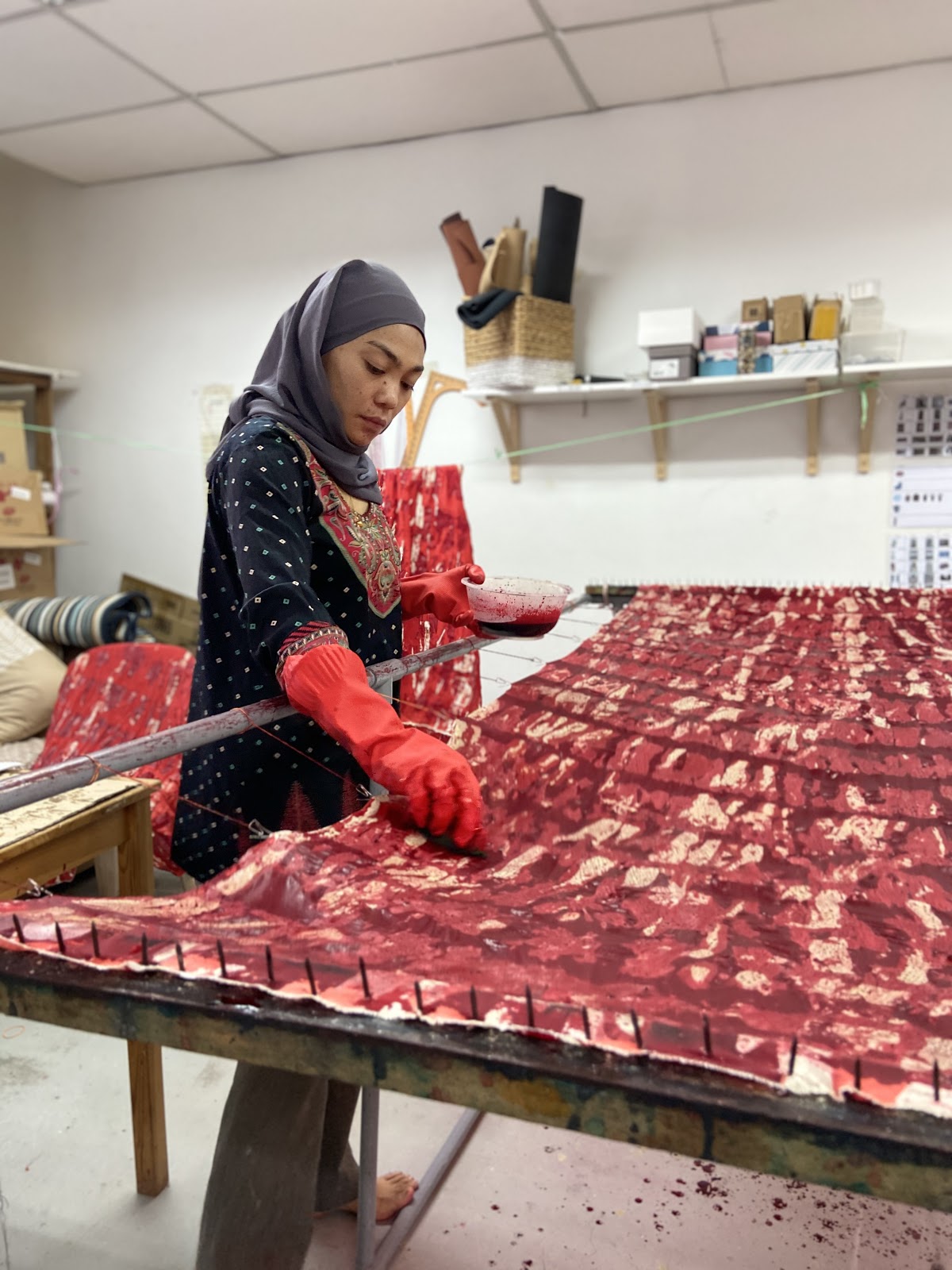
One of the artisans working on Batik Boutique’s products
After getting to know their stories, I asked their opinion about the comparison between Malaysia’s textile industry with our neighbouring countries such as Indonesia.
Farhan & Ekram – “We lack ideas and our weakness in marketing them beautifully. In my honest opinion, our government does not emphasize this area much. There is little to no awareness on the art or even the textile for that matter.”
Oscar & Juju – “A glance at our education system, the governing authorities make art and culture subjects as “other options” which in primary school, art subject is not considered crucial, thus the art subject wasn’t “really important” in the education system, and it’s not included in the big exam. While in secondary/high school, the art stream is always considered as ‘second class’ compared to science stream.
The stigma that students who chose the art stream were considered ‘failures’ has long developed itself in to an unhealthy culture, and this brainwashing continues on into tertiary education.
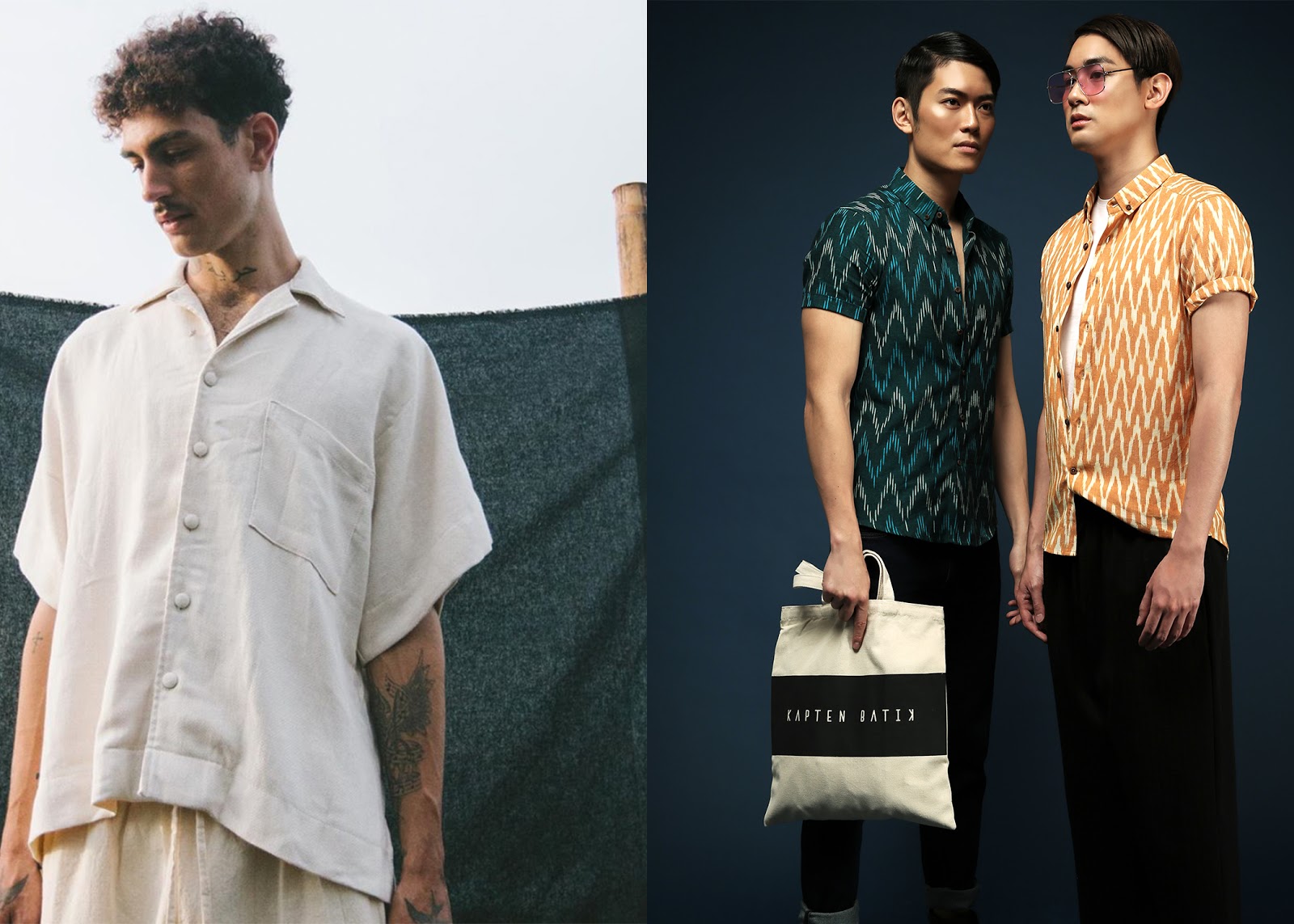
Left To Right : Tangsi Tujuh (@tangsitujuh at Instagram), Kapten Batik
As a result of this “mindset,” the number of people who continue on to bring visibility to the arts and crafts is rather small, which makes them pricier to obtain. Which is why workshops and campaigns hosted by these NGOs to bring awareness to the newer generation should be credited.”
Amy – “We need more support from the people around us to not just support buying local crafts but to help raise awareness about Malaysian textile and craft . There should be more platform opportunities for us to tell the story and heritage of Malaysia as we have so much to offer the world. Batik Boutique focuses to expand our influence and exposure both in Malaysia and internationally to bring authentic cultural experiences and products to people.”
It was interesting to see that they do believe the reason behind the issue is about raising awareness and engaging new people with the textile industry and it is not just only about buying the products or supporting them. The next question that came to my mind was that well, we may not be as advanced as other countries in this field but what can we do to modernise and upgrade our traditional batik or garments to entice the new generations to buy, look into and perhaps find some interest in batik.
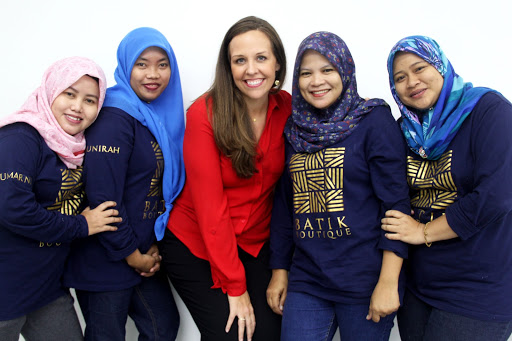
Amy from Batik Boutique with some of the seamstresses
Farhan & Ekram – “We need to adapt to fast changing behaviour and be brave enough to put the colour to our textile. By implementing surrounding architecture and design as well as combining good Pantone colour, we are ready for a new generation market.”
For Oscar & Juju, modernising the old is by keeping the essence of the process of creating and the silhouette but with a fresh new set of colours and a more minimal approach.
Amy tries to give batik a fresh look by keeping the traditional process in place and instead play around with colourways and using different layers of wax to create new motifs. They use batik in a more contemporary design such as skirts or kimono jackets to use those fabrics to create beautiful daily wear for their market.
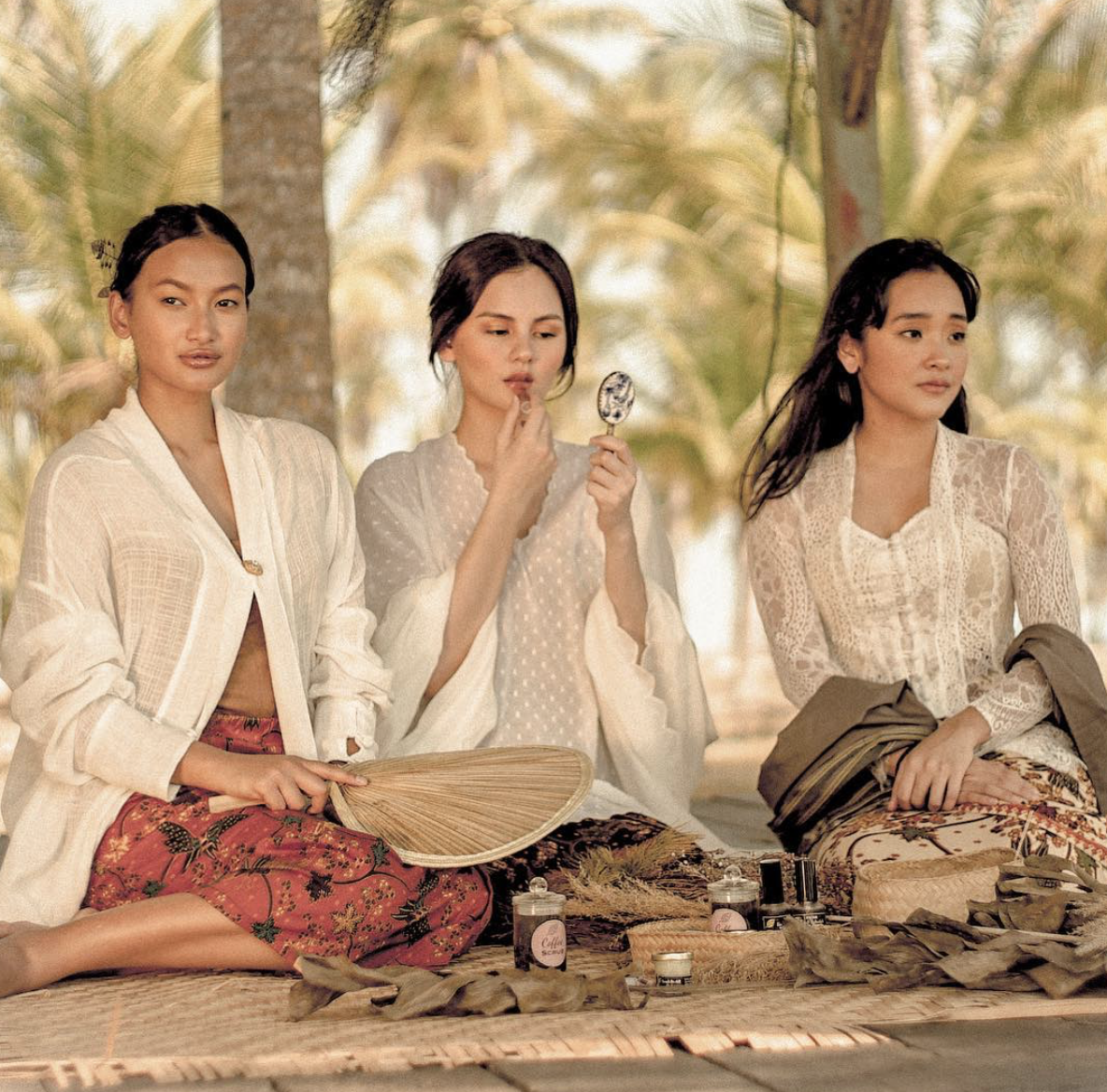
Credit: @tangsitujuh (Instagram)
Creating and modernising such things are not easy. For example the process of making batik is something that takes a lot of effort and time. Not many people are aware about how these crafts work and how much skill goes behind making them and what true value do they have. I asked the brands what they wish people would understand and know about the craft and the process behind it.
Farhan & Ekram try to educate the public through their clients. They break down the complicated process into simple steps and explain it to the people who are interested in their product so they can understand the value behind it.
Oscar & Juju – “The movement’s goal of using fully natural fabric in our pieces in order to protect our mother nature as we all know natural fabric is material that is environmentally friendly, disposable and recyclable. We want to create the awareness of ‘loving the skin you live in’ by not wearing chemical based fabrics.
Appreciate the craftsmen as none of our goods is done in a large scale factory. This is the small step we took to maintain sustainability in this industry. No lower rate pays and no illegal underage labour. This small step is resulting in helping the talented craftsmen in their economy growth and giving them the opportunity to extend their talent.

Kapten Batik
The awareness of appreciate our traditional wear cutting and details and making it wearable on many occasions even daily wear instead for a certain occasion only.”
Amy – “ Every product made by Batik Boutique impacts the livelihood of local artisans and communities.
We believe that fashion can create opportunities to provide skills so that people can lift themselves out of poverty and create thriving opportunities. Part of our profit is distributed to fund our sewing training center. This location is in walking distance from PPR (low-cost government housing) and provides skills training and fair income opportunities to women in the area. When you purchase from Batik Boutique, you are supporting 5-10 artisans for each product.
To date, we’ve worked with over 100 artisans in Malaysia. They earn on average 40 percent more than the minimum wage. When the families of artisans are counted, Batik Boutique has made an impact in the lives of more than 1,000 beneficiaries in total in Malaysia. In addition to social impact, Batik Boutique is also always doing our best to manufacture using low-waste principles. We incorporate eco-friendly practices like using low-impact dyes and by turning excess fabric into accessories. So much effort and love goes into each product, and we don’t want any of it to turn to waste.
When you purchase from Batik Boutique, you are purchasing with purpose.”
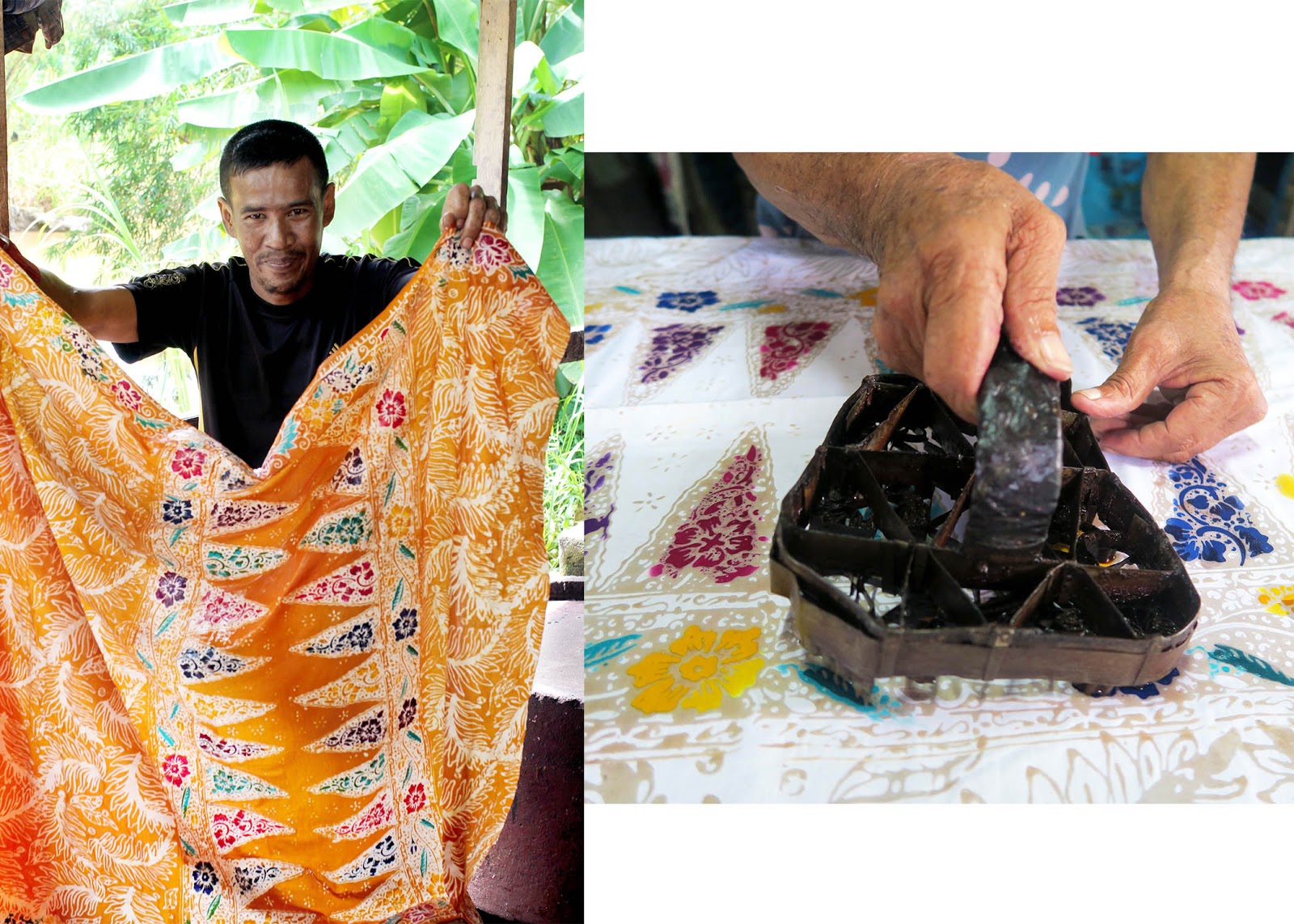
Batik artisans creating batiks for Batik Boutique
Apart from raising awareness about the craftsmanship and the process of creating, there is a mindset in our local community that batiks or kebayas can only be worn during formal/ special occasions and are not infused with our daily wardrobe. If there is a way to bring these two together, it can help the industry tremendously.
Ardi – What do you think can change the mindset of people that something like batik can still be used for daily wear and it’s not just for formal events? How can we normalize wearing those traditional pieces and introduce it to their wardrobe?
Farhan & Ekram – “We introduce contemporary batik with a selection of fine fabrics to start with. We introduce our own custom smart cutting as well. We promote our tagline which is batik “You can wear everyday”. We go for non-traditional photoshoot which is to style them with our own batik.”
Oscar & Juju – “Batik pattern can be printed or ‘canting’ or stencil block on different types of fabrics and not limited to certain fabrics only. For an idea, linen pants in local batik motif with fresh hues can be worn with a plain white tee for a casual look while the same pants can be worn with button up shirts for a semi-formal occasion.
In the international fashion scene, there are quite a number of brands that cherish their cultural/traditional prints in their design and make it wearable. Prabal Gurung and Maxhosa is a good example of a fashion house that brings their traditional prints for daily essential wear. Besides, the motif/color on the batik shouldn’t be limited to a certain pattern only. As we are rich with cultures, batik can be “canting” in kalong tebenggang motif, or stencil block with ikat limar motif. This will break the sceptical of batik by giving the fresh impression and catching the interest of many; locally and global.”
Amy – “First of all, we all need to know and appreciate the beauty behind hand-painted batik. When we appreciate the story behind it, we will value and support these products.
For example, Batik Boutique has many international customers. Because we are usually their first introduction to the art of batik, they are fascinated by the outcome and love to buy our products. We teach introductory batik workshops at our studio and the response has been good.”
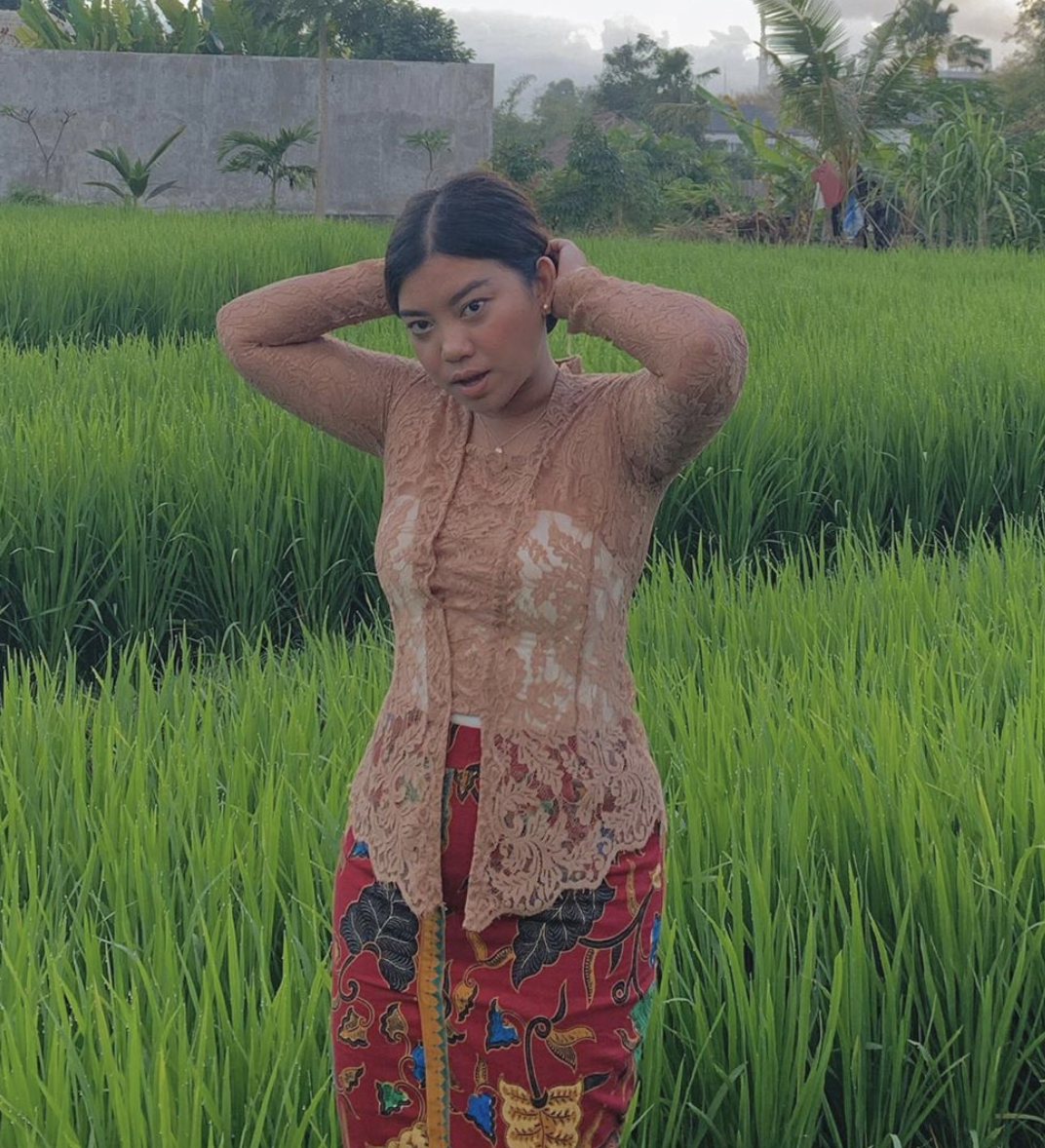
Credit: @tangsitujuh (Instagram)
Not only we need to see some changes in the customer’s mindset, but also our local fashion industry as a whole. Having more and more brands working with our native motifs and fabrics can definitely make those textiles and garments more desirable for the modern consumers.
Ardi – Do you see any changes in our fashion industry regarding using more traditional elements in their work?
Farhan & Ekram – “Yes, of course. You will see a lot of Malaysian as well as expatriates wearing our batik. Be it to grocery shopping or to the bar.”
Oscar & Juju – “ Yes. We are aware that this year more and more local brands are using traditional elements in their goods. This is a good sign and we are more than happy to see this healthy growing demand and supply scene. This indicates that more people are aware and appreciate our traditional pieces. With this good start, we hope more brand owners/designers thirst to study further about our cultural art. Not just on design, but on fabrication and making process as well.”
Amy – “ Definitely! A lot of local designers are starting to use traditional elements in their work and it’s amazing to see how they revive batik in their own version-they all have their own identity and that makes all of us different. For Batik Boutique, we are always creating new samples of products and testing the market to see what ways we can push Malaysian batik beyond traditional or formal wear.”
It is great to see all these brands putting their effort into reviving such great textile and garments that are a part of our culture and introducing it in a new way into our new lifestyles!
At the end I wanted to know about their future plans for their business and what they have in mind.
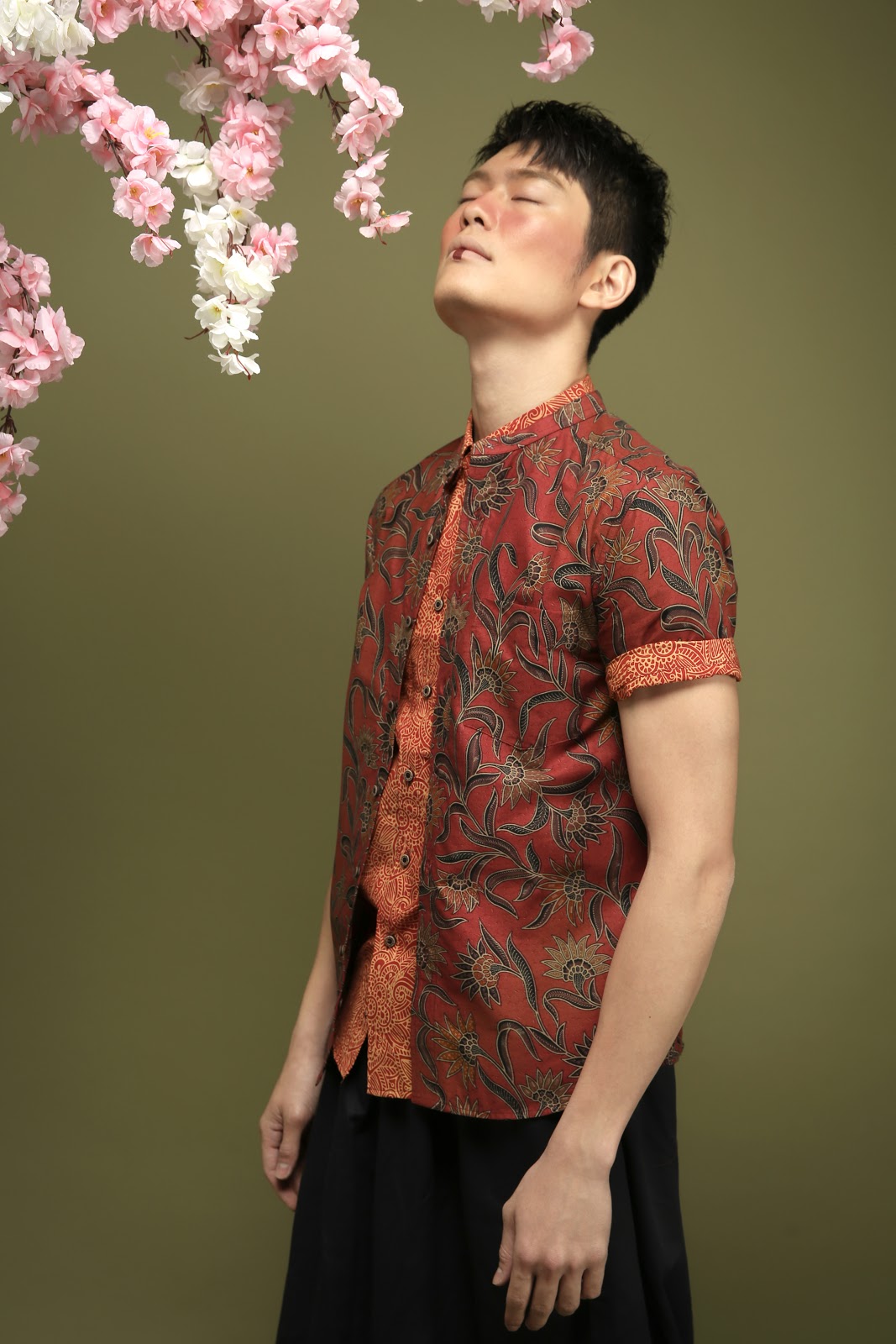
Kapten Batik
Farhan & Ekram – “ We always do our R&D on every aspect to improvise the batik from time to time. Every season, we always try the new technique and the new fabrics that are yarn specifically for us from the mill factory. “
Oscar & Juju – “ There is a long list. Generally, we want to create an awareness of a generation who appreciate their roots and take good care of our mother nature.”
Amy – “The goal for Batik Boutique is to become the premier global batik company in the world. We have created a movement of doing business for good in Malaysia, and we hope to take that same concept into the rest of the world so others can appreciate and support artisan and Malaysian made.”
It was interesting to see that certain points that I had in mind the beginning were aligned with the answers I got but what was quite amazing to me is the fact that each of those brands took a very distinct way to promote and keep the crafts alive. It is lovely to see the efforts that they put into their work and I hope we get to see more modern designers take their spin on our native textile and craft.
If you are interested to get to know more about these brands, You can check Batik Boutique’s website Here, Tangsi Tujuh Here and Kapten Batik Here.

